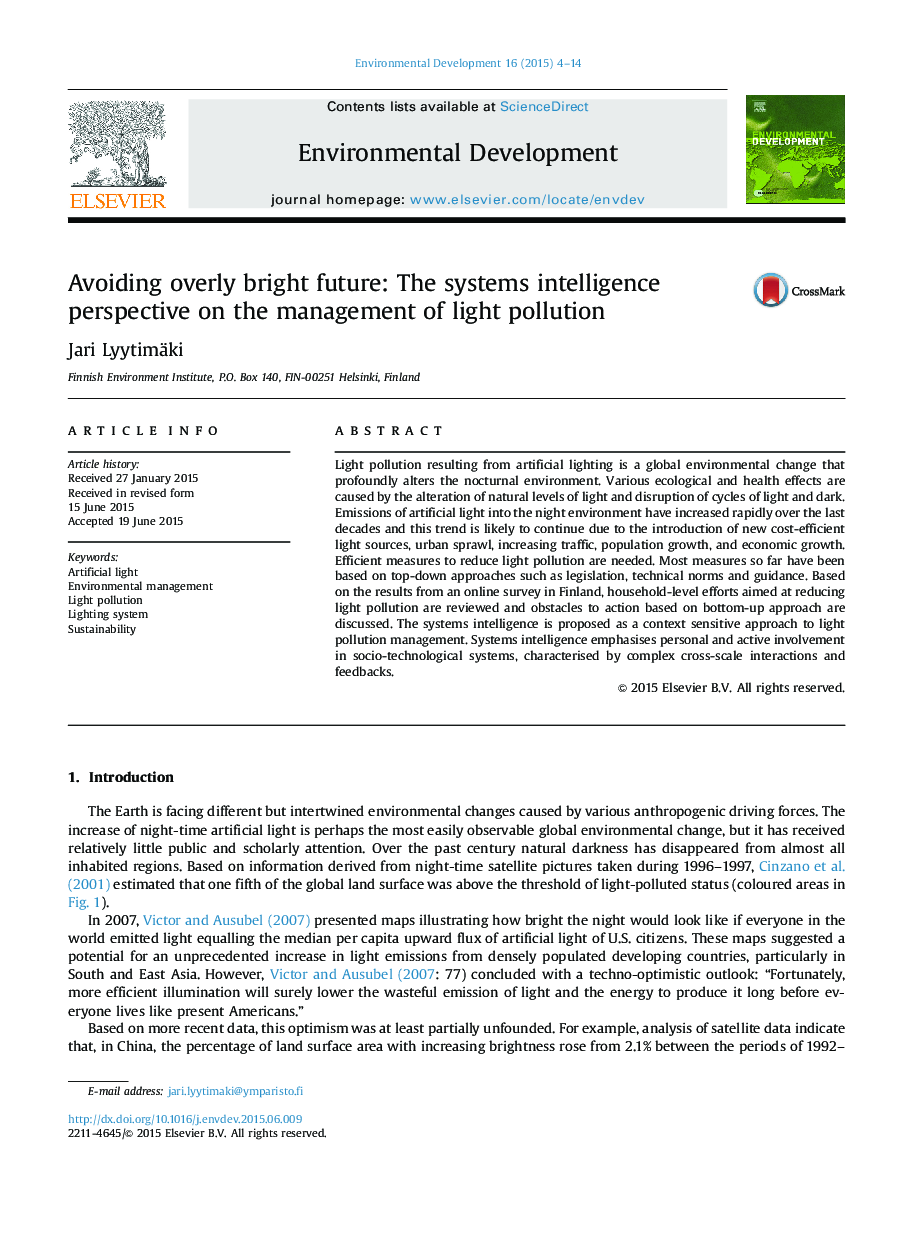| Article ID | Journal | Published Year | Pages | File Type |
|---|---|---|---|---|
| 4391408 | Environmental Development | 2015 | 11 Pages |
•Light pollution is a wide-spread novel environmental change.•Stringent management measures are needed to curb light pollution.•The repertoire of household level measures were identified.•Wide array actions have been employed but the problem is seen as overwhelming.•Systems intelligence may help to overcome four key issues related to light pollution.
Light pollution resulting from artificial lighting is a global environmental change that profoundly alters the nocturnal environment. Various ecological and health effects are caused by the alteration of natural levels of light and disruption of cycles of light and dark. Emissions of artificial light into the night environment have increased rapidly over the last decades and this trend is likely to continue due to the introduction of new cost-efficient light sources, urban sprawl, increasing traffic, population growth, and economic growth. Efficient measures to reduce light pollution are needed. Most measures so far have been based on top-down approaches such as legislation, technical norms and guidance. Based on the results from an online survey in Finland, household-level efforts aimed at reducing light pollution are reviewed and obstacles to action based on bottom-up approach are discussed. The systems intelligence is proposed as a context sensitive approach to light pollution management. Systems intelligence emphasises personal and active involvement in socio-technological systems, characterised by complex cross-scale interactions and feedbacks.
